Audio, Brand Building, And Emotion Were Hot Topics At The 2019 ANA Masters Of Marketing Conference
Over 3,000 attendees were present last week in Orlando for the Masters of Marketing conference held by the Association of National Advertisers, where they gathered to hear from the Chief Marketing Officers of some of the most respected and innovative brands.
Here are a few of the key takeaways from the conference:
What is the sound of our brand?
That’s the question Target CMO Rick Gomez is working on with his team: “With our brand, we have a really clear point of view on how it shows up visually … so when you see a piece of content you go, ‘that’s Target’,” he said. “Part of that is casting and the lighting and the craftsmanship but sound is really important, and we believe sound is going to be increasingly important.”
To Gomez, creating a sonic strategy is “audio branding in a holistic way.” It’s not just about the audio in their ads. It’s what you hear when you walk into Target and the music you hear when you call the help desk.
Gomez notes the rise of voice search and voice shopping will make audio strategy vital for retail marketing.
Sound is the new screen
Accenture Interactive observed, “Forward-looking CMOs recognize the growing potential of audio and interactive voice as a dominant medium, elevating the importance of determining smart marketing strategies that can deliver brand messaging without a screen.”
P&G is leading the way with AM/FM radio
Marketers and agencies were amazed to learn that P&G is now America’s fifth biggest advertiser on American AM/FM radio after being absent from AM/FM radio for decades.
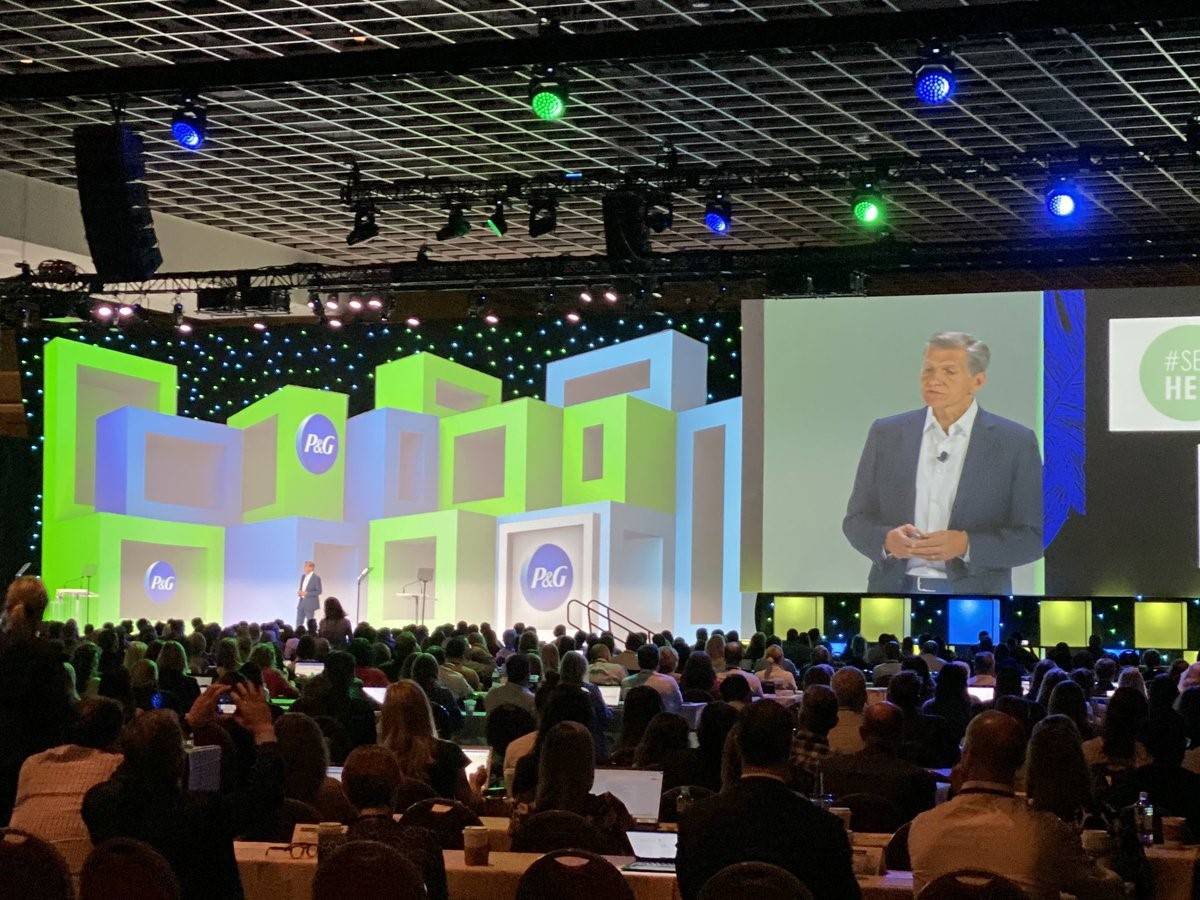 Marc Pritchard, Chief Brand Officer, Procter & Gamble
Marc Pritchard, Chief Brand Officer, Procter & Gamble
P&G’s smart thinking on AM/FM radio, cutting digital spend to reduce fraud, and taking media planning in house is working.
Audio is a key media channel for Oatly oat milk
Oatly is a new kind of milk made from oats. They are big believers in AM/FM radio, outdoor, podcasts, and print.
Digital? Nope. “We’re looking for something more real. We want people to see the ads. More human and real,” according to Mike Messersmith, General Manager of Oatly.
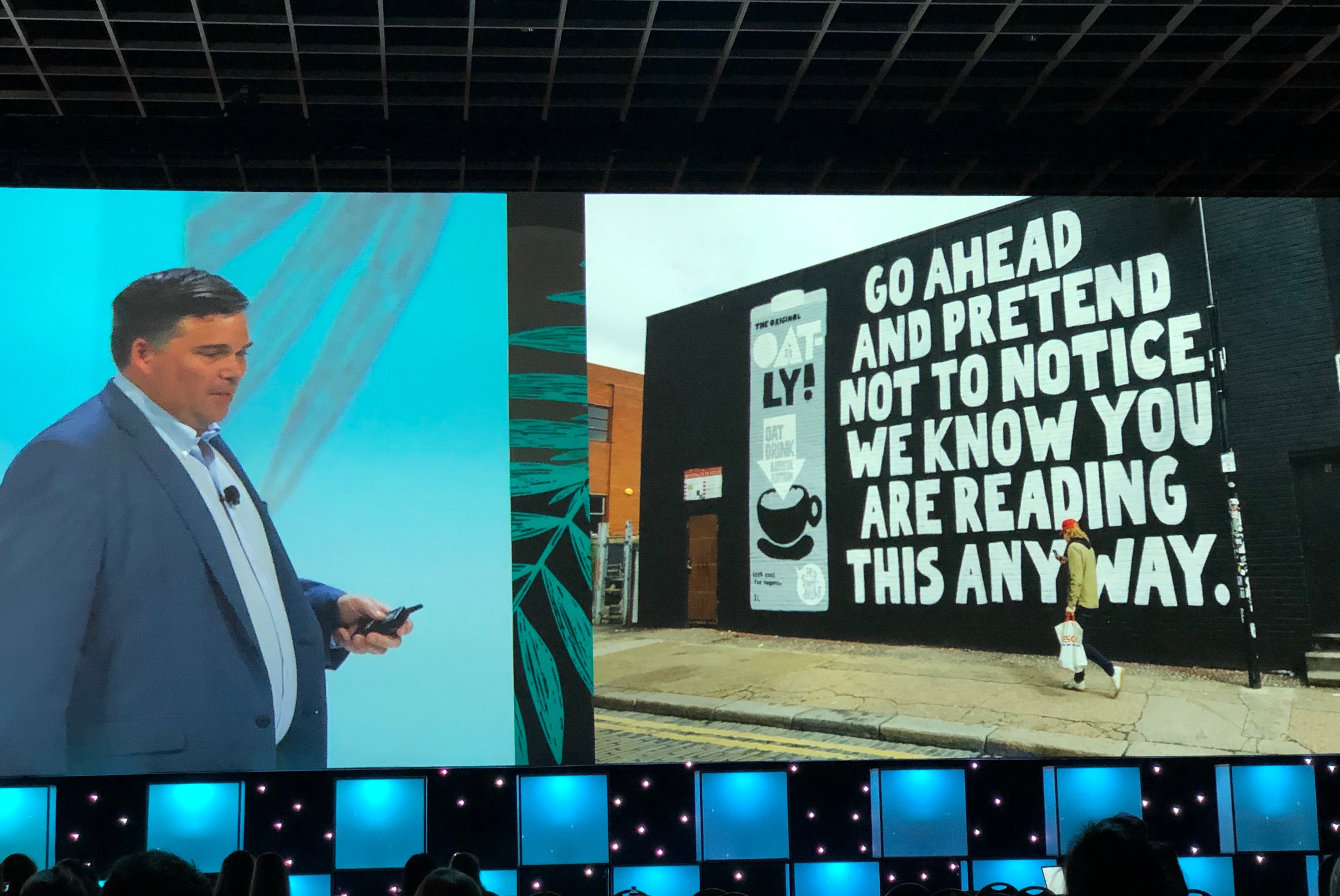 Mike Messersmith, General Manager, Oatly
Mike Messersmith, General Manager, Oatly
Using data is a very fashionable thing to do these days in marketing circles. Oatly was one of the first brands to say they don’t use data. “The wrong interpretation of data can take you to the wrong place…the only thing we have is a voice,” said Messersmith.
Messersmith’s branding mandate? Be noticed. That’s why they use print, outdoor, and audio. They want real people to see the ads. Their creative is humorous and self-referential.
Connecting with the heart and the importance of emotion
Many of the speakers spoke about the importance of using emotion in their marketing.
Meredith Verdone, Chief Marketing Officer of Bank of America, asked, “Are you making your tech more human, or do you have humanity? We are building brands and brands are very emotional things. At the end of the day you have to connect rationally, but also in the heart.”
“Humans experience 27 different kinds of feelings and today consumers are using emotions more and more to drive purchasing decisions,” said Alicia Tillman, SAP Chief Marketing Officer. “We need to get experiential data to help us understand those 27 feelings.”
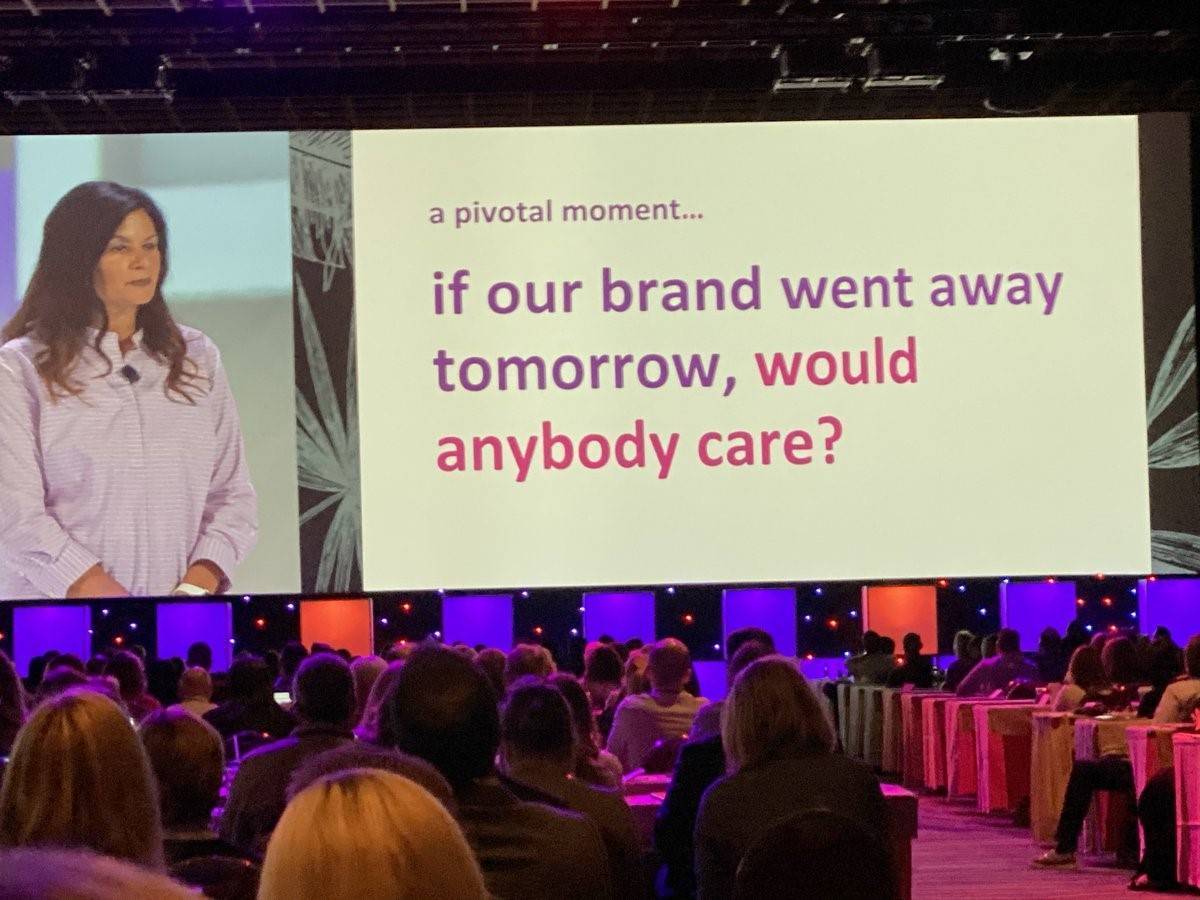 Andrea Brimmer, Chief Marketing and Public Relations Officer, Ally Financial
Andrea Brimmer, Chief Marketing and Public Relations Officer, Ally Financial
Andrea Brimmer, Chief Marketing and Public Relations Officer of Ally Financial, advised, “As marketers, it’s our job to make people care. We must incite, improve, and inspire.”
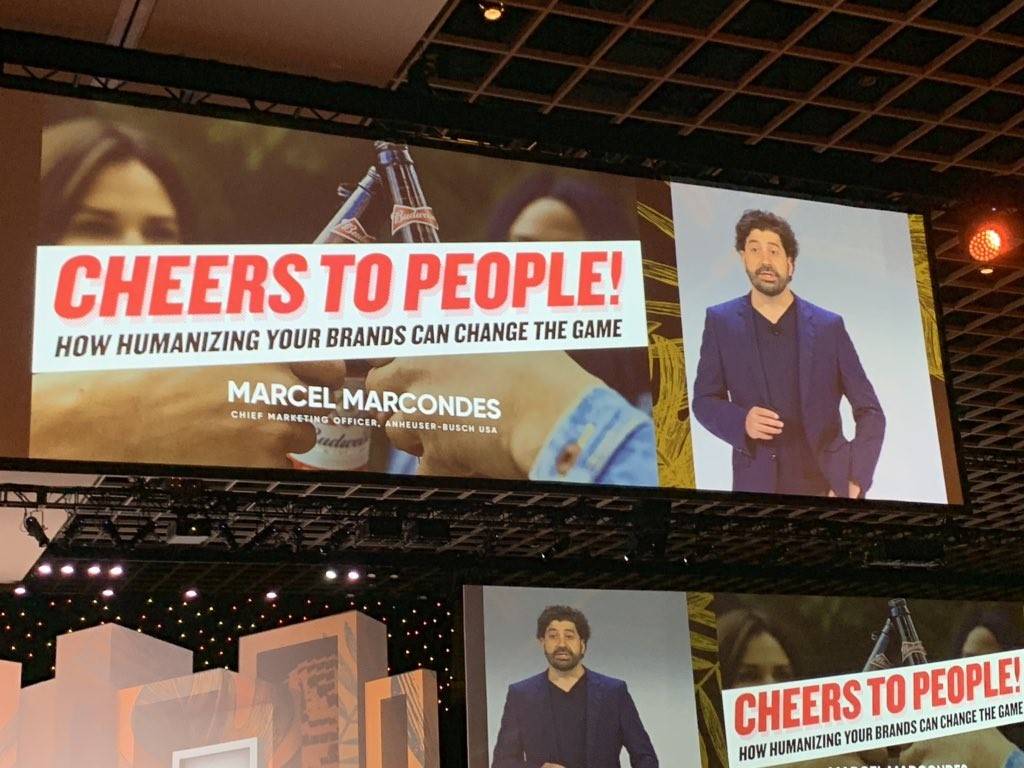
Marcel Marcondes, U.S. Chief Marketing Officer, Anheuser-Busch
Marcel Marcondes, U.S. Chief Marketing Officer at Anheuser-Busch, offered four strategies to humanize a brand:
- Speak their language
- Break the stereotypes
- Give them what they want
- Show them you care
And a bonus, last but not least, have a beer
Brands are built with emotion, not discounts
There is hard financial proof on the power of emotional creative. The world’s leading authorities on marketing effectiveness, Les Binet and Peter Field, study thousands of companies. They found that compared to rational campaigns, emotional creative builds brands more strongly and yields strong long-term business effects.
Doug Zarkin, Chief Marketing Officer of Pearle Vision, explained that his brand had lost its way by their marketing focus on discounts and deals. The result was that Pearle “lost its differentiation in the optical market as people saw it as just another big-box chain.”
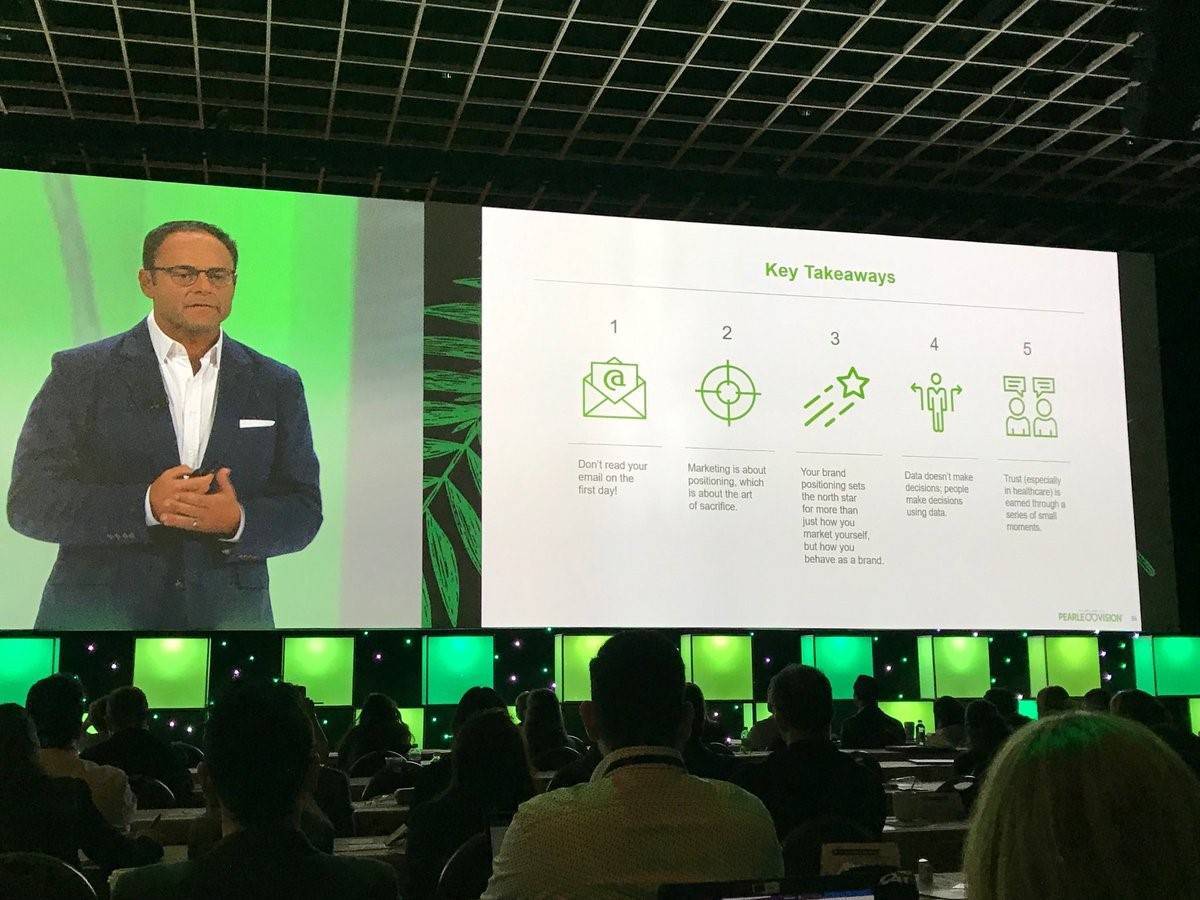
Doug Zarkin, Chief Marketing Officer, Pearle Vision
“Trying to be everything to everyone means you are nothing to nobody and that is exactly what we had become at Pearle,” Zarkin said. “Marketing is about positioning, positioning is about the art of sacrifice.”
Watch out for excessive frequency
A warning and best practice came from Charlie Chappell, Head of Integrated Media and Communications Planning at The Hershey Company. He urged marketers to insert the following clause in their digital orders: “Partner will monitor campaign frequency and serve no more than X/ hour up to X/day per user.”
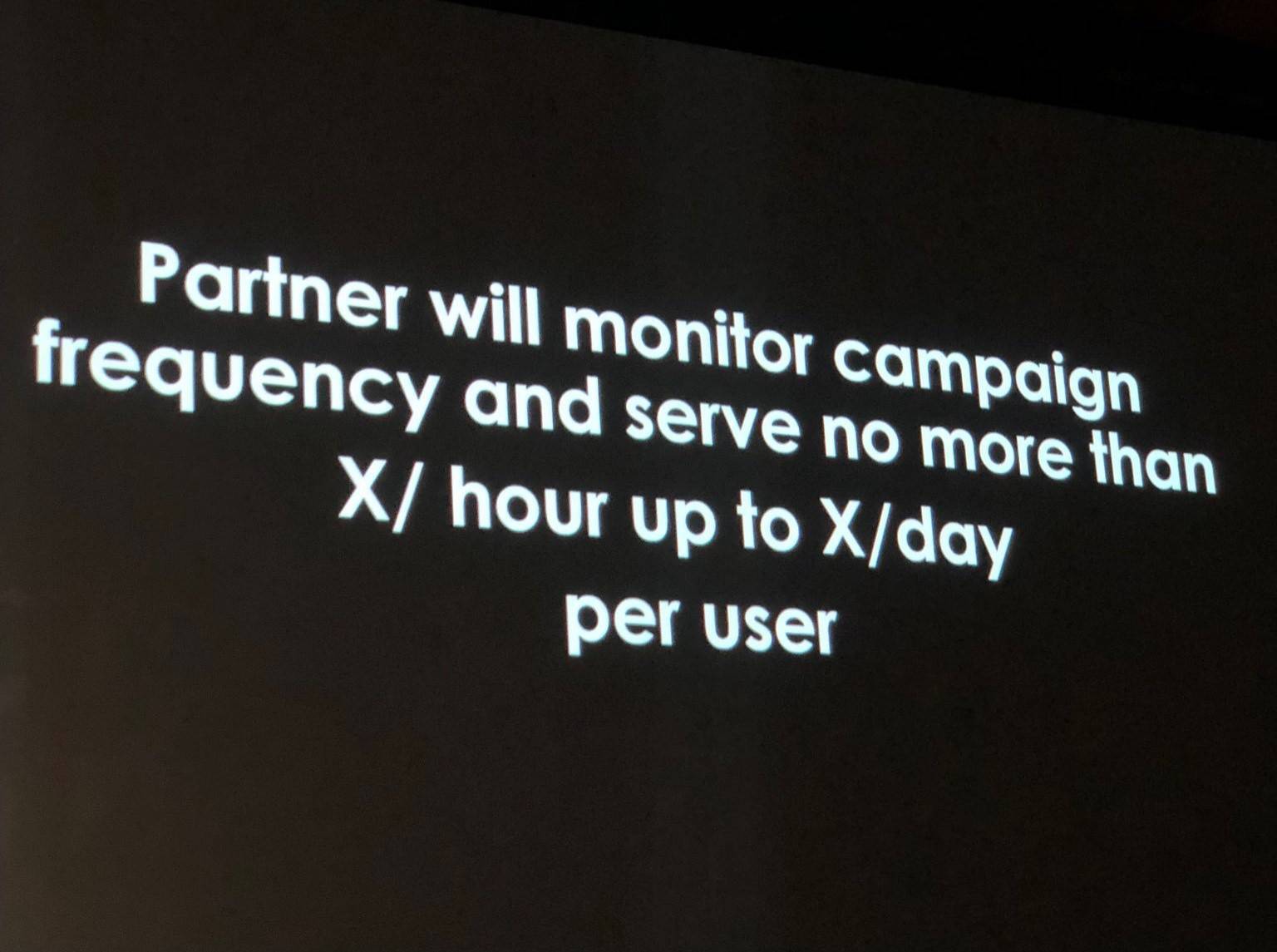
P&G’s Marc Pritchard has found TV can also be a source of excessive frequency. “By analyzing set-top box data, U.S. Tide found they were reaching the same household 22 times a month, so they cut off the excess and placed ads with greater precision in programs to avoid the annoying experience of seeing the same ad over and over again.”
Plunging TV audiences, toxic social media, and promising esports
Hershey’s Chappell gave a spectacular presentation on media trends. He observed TV audience erosion is reaching “material” levels. “Today the same number of (TV) GRPs will deliver less reach. And guess what, you’ll have to pay more for it.”
Chappell blamed venture-funded direct-to-consumer brands for being “willing to pay more” and driving up TV CPMs. Chappell wondered if “these inflated TV CPMs will hold and continue.” He then rattled off the confusing 15 names for advanced TV, simplifying into a straightforward term: “Streaming TV – engaging long form video with sound.”
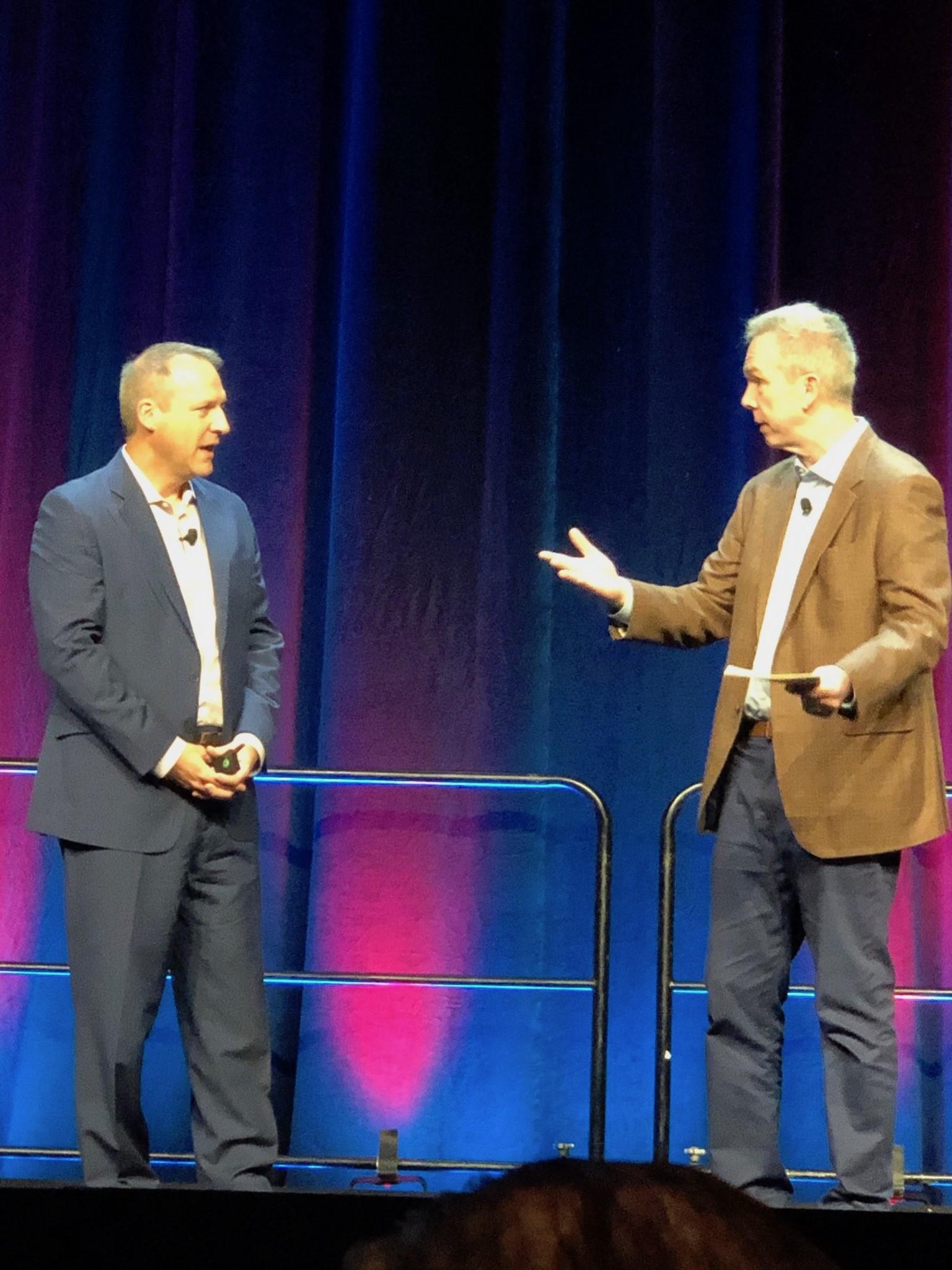
L-R: Charlie Chappell, Head of Integrated Media and Communications Planning, The Hershey Company;
Bill Duggan, Group Executive Vice President, ANA
“We are entering the third generation of social media,” Chappell concluded. “There is a lot of toxicity and bad behavior on the social media platforms, and (the social media firms) don’t know how to control it.” Chappell is keeping his eye on TikTok. “It’s very engaging. It’s like watching a train wreck.”
Chappell is bullish on esports, but he warned, “It’s dangerous to apply classic sports marketing approaches to esports and gaming.” He advised, “Avoid the logo slap. Look at the prices. They are acting like they are already the NFL. Innovate. What can we do differently that we can do better?”
Hershey has partnered directly with the gamers as “there are not six levels of agents between you and the gamers,” according to Chappell. Working with gamers has taught Hershey a lot about esports on how to make their marketing authentic.
Chappell urged the audience to separate the signal from the noise. He gave a crisp list of trends that are total hype with no substance: AI, machine learning, and blockchain. He rolled his eyes and added, “If I get one more email about how AI and machine learning can grow my business…”
“The rise of retailer media groups” is a media trend Chappell does have his eye on. He called it “CPG marketing nirvana.” Firms such as Walmart, Target’s Roundel, and Kroger’s 8451 have massive troves of detailed grocery shopper data on their customers.
This data allows firms like Hershey to find the right audience, master identity, and close the loop by connecting media to sales effect. To maximize this trend, brands will have to “break the silos between brand marketing and shopper marketing.”
American AM/FM radio companies are front and center at the Masters of Marketing
A record number of AM/FM radio executives and group owners attended the conference and made their presence known. iHeartMedia sponsored the Thursday night dinner and entertainment with the rock group Bush.
On Wednesday night, Westwood One provided the evening entertainment with a spectacular set from superstar band OneRepublic.
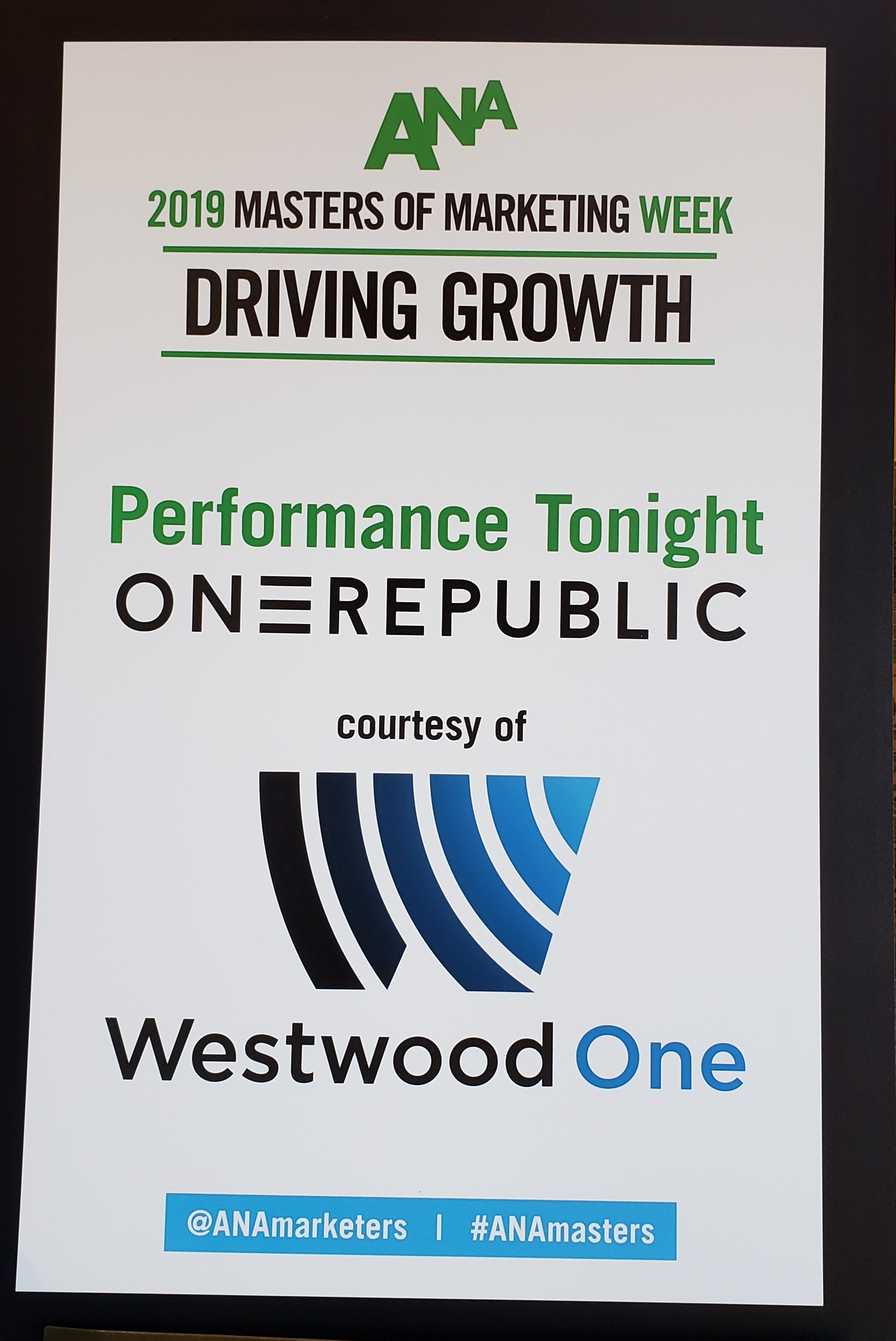
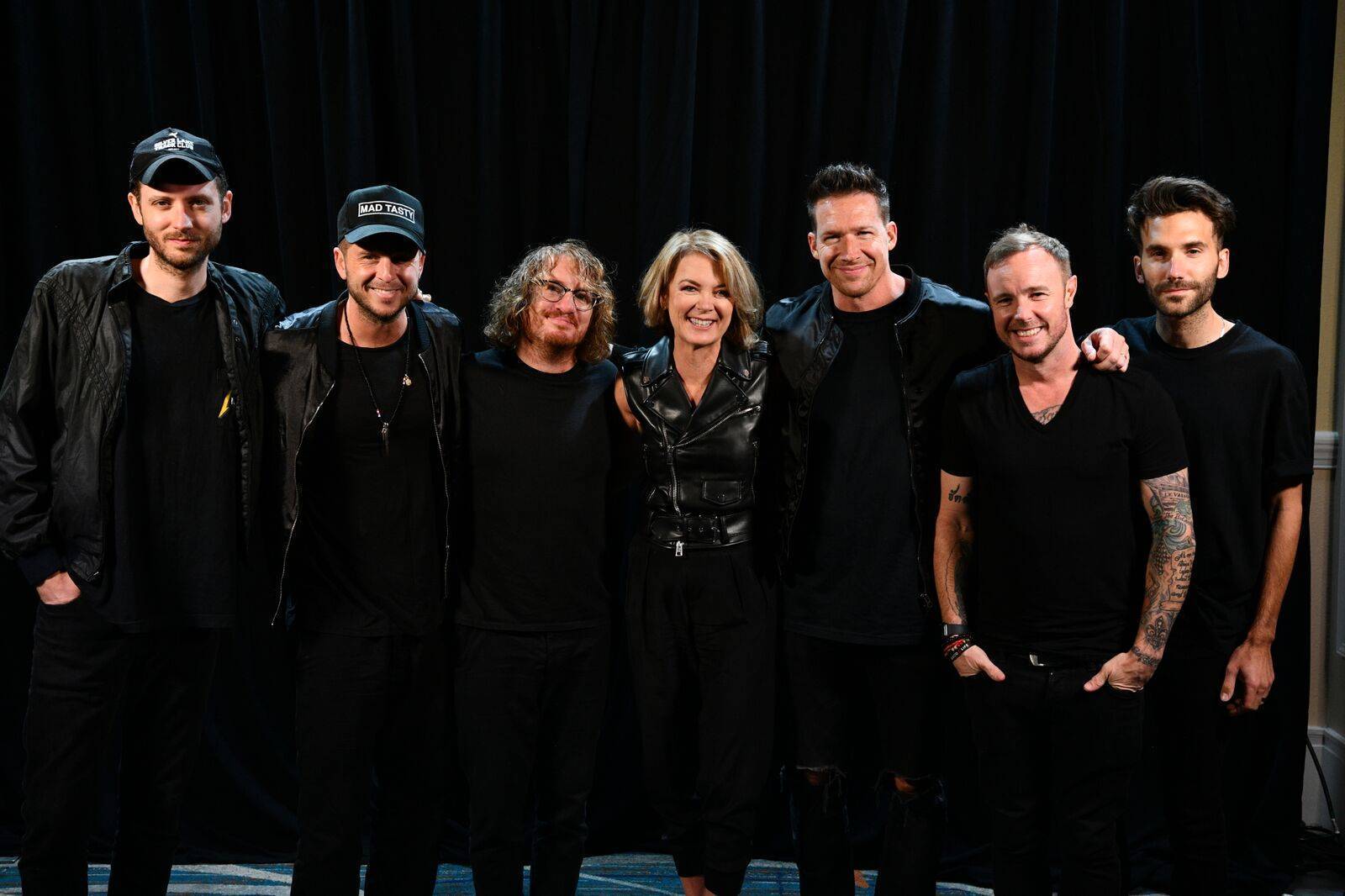
Suzanne Grimes, EVP Marketing, CUMULUS MEDIA and President, Westwood One, with OneRepublic; Photo by CLARION PICTURES
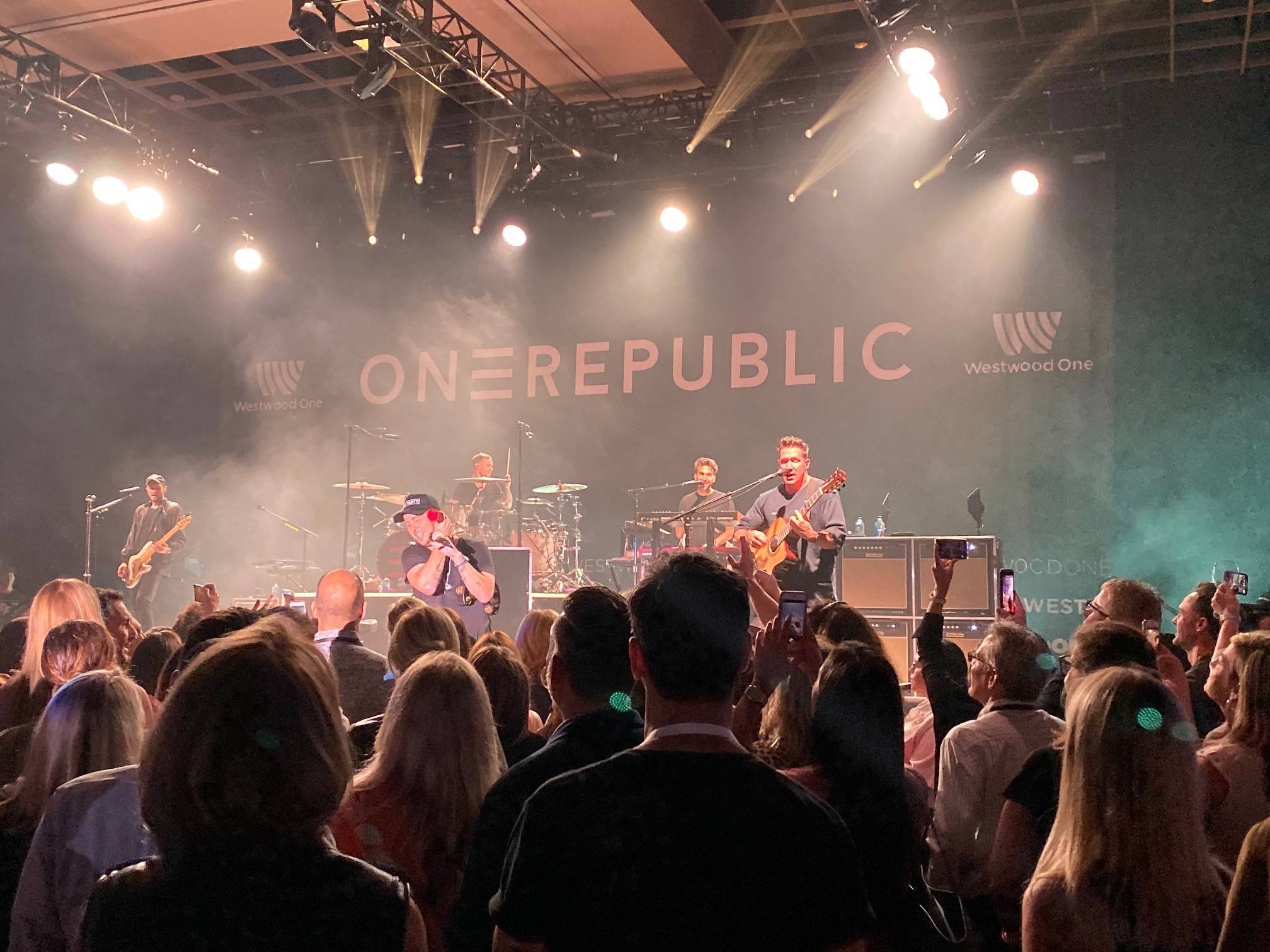
OneRepublic; Photo by CLARION PICTURES
To recap the main messages of this year’s ANA Masters of Marketing conference:
- Audio is a top priority for American marketers: podcasts, smart speakers, and voice search are fueling this trend
- Emotion is important: creative builds brands so it needs to speak to the heart
- Major brands like P&G are using AM/FM radio to supplement digital and make their TV better
- Revenue and profit growth come from building brands rather than touting discounts and deals
- Used properly, data can be used to tell stories that resonate with consumers
Pierre Bouvard is Chief Insights Officer at CUMULUS MEDIA | Westwood One.
Contact the Insights team at CorpMarketing@westwoodone.com.